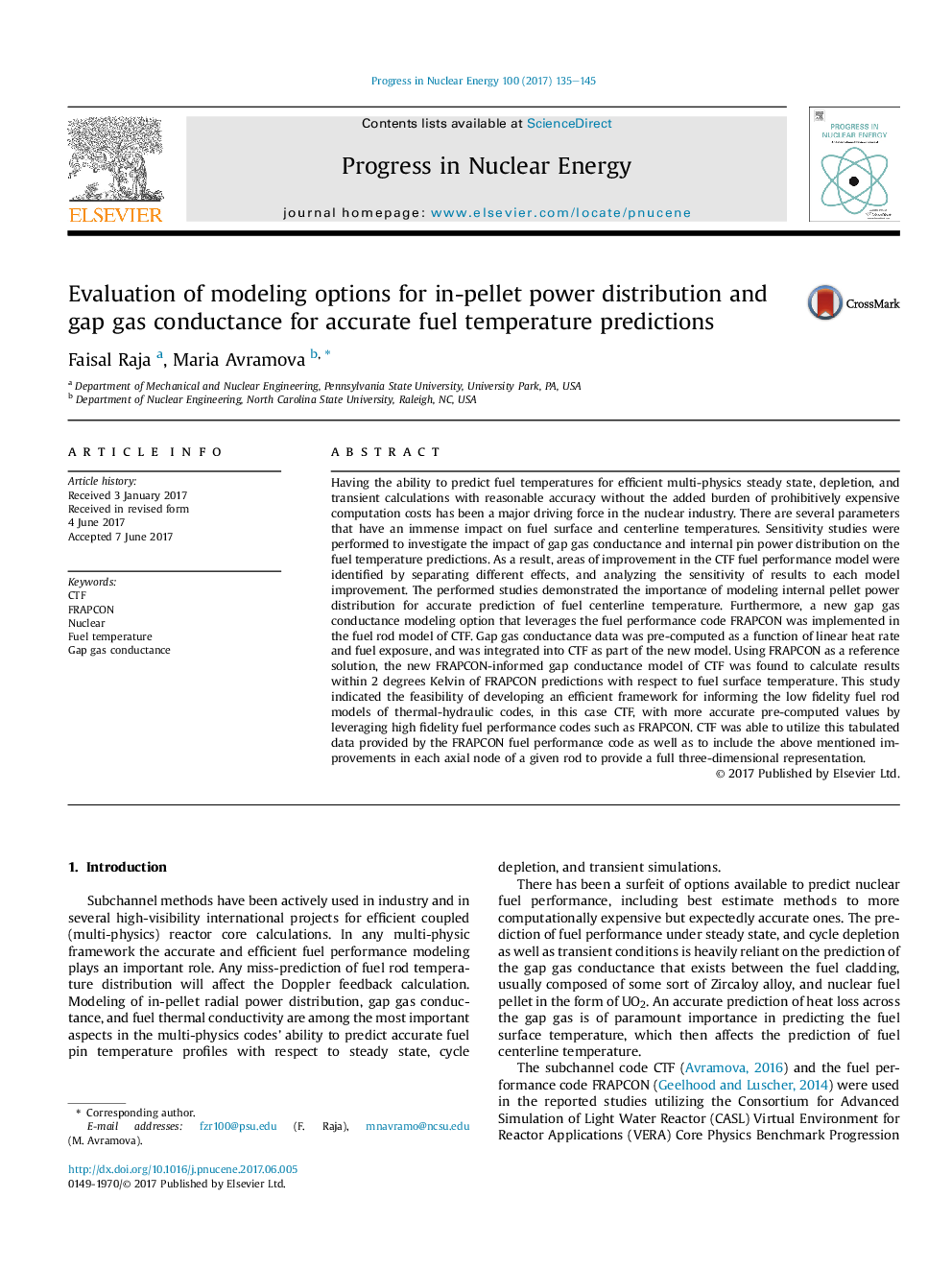| کد مقاله | کد نشریه | سال انتشار | مقاله انگلیسی | نسخه تمام متن |
|---|---|---|---|---|
| 5478172 | 1521738 | 2017 | 11 صفحه PDF | دانلود رایگان |
عنوان انگلیسی مقاله ISI
Evaluation of modeling options for in-pellet power distribution and gap gas conductance for accurate fuel temperature predictions
ترجمه فارسی عنوان
ارزیابی گزینه های مدل سازی برای توزیع قدرت در داخل پلت و هدایت گاز شکاف برای پیش بینی های دقیق سوخت
دانلود مقاله + سفارش ترجمه
دانلود مقاله ISI انگلیسی
رایگان برای ایرانیان
موضوعات مرتبط
مهندسی و علوم پایه
مهندسی انرژی
مهندسی انرژی و فناوری های برق
چکیده انگلیسی
Having the ability to predict fuel temperatures for efficient multi-physics steady state, depletion, and transient calculations with reasonable accuracy without the added burden of prohibitively expensive computation costs has been a major driving force in the nuclear industry. There are several parameters that have an immense impact on fuel surface and centerline temperatures. Sensitivity studies were performed to investigate the impact of gap gas conductance and internal pin power distribution on the fuel temperature predictions. As a result, areas of improvement in the CTF fuel performance model were identified by separating different effects, and analyzing the sensitivity of results to each model improvement. The performed studies demonstrated the importance of modeling internal pellet power distribution for accurate prediction of fuel centerline temperature. Furthermore, a new gap gas conductance modeling option that leverages the fuel performance code FRAPCON was implemented in the fuel rod model of CTF. Gap gas conductance data was pre-computed as a function of linear heat rate and fuel exposure, and was integrated into CTF as part of the new model. Using FRAPCON as a reference solution, the new FRAPCON-informed gap conductance model of CTF was found to calculate results within 2 degrees Kelvin of FRAPCON predictions with respect to fuel surface temperature. This study indicated the feasibility of developing an efficient framework for informing the low fidelity fuel rod models of thermal-hydraulic codes, in this case CTF, with more accurate pre-computed values by leveraging high fidelity fuel performance codes such as FRAPCON. CTF was able to utilize this tabulated data provided by the FRAPCON fuel performance code as well as to include the above mentioned improvements in each axial node of a given rod to provide a full three-dimensional representation.
ناشر
Database: Elsevier - ScienceDirect (ساینس دایرکت)
Journal: Progress in Nuclear Energy - Volume 100, September 2017, Pages 135-145
Journal: Progress in Nuclear Energy - Volume 100, September 2017, Pages 135-145
نویسندگان
Faisal Raja, Maria Avramova,
